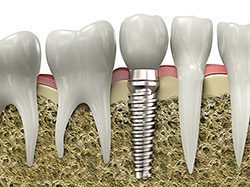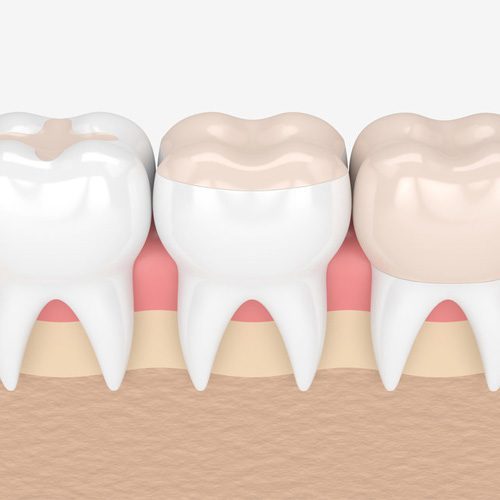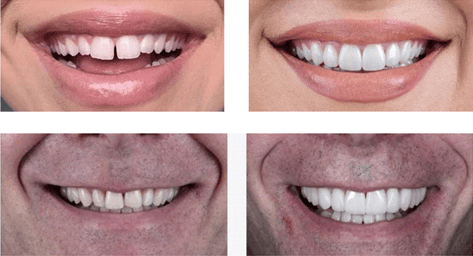Restorative Dentistry in Kirkland, WA

During your first dental examination with x-rays, you will be given the opportunity to discuss your dental health and goals. What is important to you, is priority for us. You will be presented with options to meet your dental goals. We offer many different services. But, you will be invited to join the decision-making process of what dental treatment will work best for you. In partnership with YOUR dentist, you will have a healthy smile and know you were a part of the process. Leaving the dental office feeling confident and informed of your dental plan is our goal.
A New, Beautiful Smile In Just One Day!

Maintain optimal oral function and aesthetics with All-on-4 sameday teeth replacement. Using state-of-the-art technology, All-on-4 treatment replaces traditional dentures, which can be uncomfortable, inconvenient, and poorly fitted. All-on-4 turns problematic chewing and speaking into relics of the past. Using only four* dental implants to attach a full dental restoration, your doctor can give you the stable, functional, and cosmetic solution you’ve been looking for. Best of all, your dentures can be placed on the same day as your implants, so you don’t have to wait to get the restored smile you deserve.
* Five or six implants may sometimes be necessary , depending on individual patient circumstances
The Benefits Of All-on-4®
- Because All-on-4 allows full-arch restoration with only four implants, your treatment and recovery time are greatly reduced.
- All-on-4 lowers the need for bone graft surgery while ensuring greater stability in the existing bone. It can even be used for patients who have been told they do not qualify for implants due to bone loss.
- The All-on-4 solution is more comfortable than traditional dentures because All-on-4 implants bridges are more secure and feel like natural teeth.
- You’ll never have to worry about your false teeth slipping or falling out while you eat or engage in conversation.
- There is no need for denture adhesive!
Who Can Benefit From All-on-4®
It is most suitable for people who have lost all or most of their teeth or have a Terminal Dentition and who are looking for a fixed toothreplacement option. Many of our patients come to see us after pouring time, money, and energy into treatments with questionable long-term prognosis. If you suffer from broken teeth; defective bridges; failing root canals; questionable gum health; or loose, ill-fitting, or unaesthetic dentures, the All-on-4® solution may be ideal for you.
What’s Will My Teeth Be Made Of?
Your All-on-4 gums and teeth will be made from zirconia — an incredibly strong and natural-looking material. Zirconia Means No Cracking, Breakage, Chipping, or Staining!
Zirconia is the clear choice for patients looking for the most aesthetic, durable, permanently attached, implant supported tooth replacement option! If you’ve been told that an acrylic-hybrid bridge (a titanium metal bar covered with pink acrylic and plastic denture teeth) or a metal bar overdenture with plastic teeth are your only options, you owe it to yourself to ask us about our zirconia options: NobelProcera® Bridge, Prettau Bridge® or the Ivoclar SageMax® Bridge.
At Juanita Family Dentistry, we will custom design your zirconia bridge to give you a long-lasting, beautiful smile that will make you look younger and feel healthier. There’s no metal to hide and no acrylic or plastic to stain, crack, chip or break.
How Do I Know If A Zirconia Allon-4® Bridge Is Right For Me?
The best candidates for an All-on-4 Bridge are people who have what is commonly called a terminal dentition (embed link to the AAID video about Terminal Dentition). There are many reasons why people lose all their teeth — medical conditions, neglect due to severe dental anxiety, trauma, dental infections, predisposition to gum disease, and/or tooth decay. Other candidates are people with removable dentures that are loose and uncomfortable and who want to be able to speak, chew and enjoy their favorite foods like they did when they had their natural teeth.

Crowns are a restorative procedure used to improve your tooth’s shape or to strengthen a tooth. Crowns are most often used for teeth that are broken, worn, or have portions destroyed by tooth decay.
A crown is a “cap” cemented onto an existing tooth that usually covers the portion of your tooth above the gum line. In effect, the crown becomes your tooth’s new outer surface. Crowns can be made of porcelain, metal, or both. Porcelain crowns are most often preferred because they mimic the translucency of natural teeth and are very strong.
Crowns or onlays (partial crowns) are needed when there is insufficient tooth strength remaining to hold a filling. Unlike fillings, which apply the restorative material directly into your mouth, a crown is fabricated away from your mouth. Your crown is created in a lab from your unique tooth impression, which allows a dental laboratory technician to examine all aspects of your bite and jaw movements. Your crown is then sculpted just for you so that your bite and jaw movements function normally once the crown is placed.

If you are missing teeth, it is crucial to replace them. Without all your teeth, chewing and eating can destabilize your bite and cause you discomfort. When teeth are missing, your mouth can shift and even cause your face to look older. Implants are a great way to replace your missing teeth, and if properly maintained, can last a lifetime!
An implant is a new tooth made of metal and porcelain that looks just like your natural tooth. It’s composed of two main parts: one part is the titanium implant body that takes the place of the missing root, and the second part is the tooth-colored crown that is cemented on top of the implant. With implant treatment, you can smile confidently knowing no one will ever suspect you have a replacement tooth.
In addition to tooth replacement, implants may be used to anchor dentures, especially lower dentures that tend to shift when you talk or chew. For patients with removable partial dentures, implants can replace missing teeth so you have a more natural-looking smile.

Traditional dental restoratives, or fillings, are most often made of silver amalgam. The strength and durability of this traditional dental material makes it useful for situations where restored teeth must withstand extreme forces that result from chewing, often in the back of the mouth.
Newer dental fillings include ceramic and plastic compounds that mimic the appearance of natural teeth. These compounds, often called composite resins, are usually used on the front teeth where a natural appearance is important, but they can also be used on the back teeth depending on the location and extent of the tooth decay.
There are two different kinds of fillings: direct and indirect. Direct fillings are fillings placed into a prepared cavity in a single visit. They include silver amalgam, glass ionomers, resin ionomers, and composite (resin) fillings. Indirect fillings generally require two or more visits. They include inlays, onlays, and veneers. They are used when a tooth has too much damage to support a filling but not enough to necessitate a crown.
Dentures are natural-looking replacement teeth that are removable. There are two types of dentures: full and partial. Full dentures are given to patients when all of the natural teeth have been removed. Partial dentures are attached to a metal frame that is connected to your natural teeth and are used to fill in where permanent teeth have been removed. Just like natural teeth, dentures need to be properly cared for. Use a gentle cleanser to brush your dentures, always keep them moist when they’re not in use, and be sure to keep your tongue and gums clean as well.

Implant-retained dentures are removable dentures that are held in place by dental implants. Typically, 2 or 4 implants are needed to stabilize and retain a denture. For patients with an uncomfortable or loose-fitting denture, stabilizing it with implants can be more comfortable, functional and cost-effective when compared with non-removable solutions such as All-on-4™ solution.
Implants are placed in the jaw, where they are anchored firmly in the surrounding bone. Attachments are placed in the underside of the denture that connect to the implants. When placed in the mouth, the denture snaps onto the implants, keeping it stable and secure.
WHAT ARE THE BENEFITS OF DENTURES RETAINED BY IMPLANTS
- People who opt for implant-retained dentures are more confident when they talk, laugh, and eat in public. You’ll never have to worry about your false teeth slipping or falling out while you eat or are engaged in conversation.
- Implant-retained dentures are far more comfortable because they are more secure and feel more like natural teeth. There is also less irritation of gum tissue; patients who have conventional dentures often suffer pain and sores caused by the loose denture abrading the gum tissue.
- Wearing implantretained dentures can also help your appearance in the long term by preventing jaw shrinkage and bone loss.
- Implant-retained dentures can be more cost-effective when compared with non-removable solutions such as All-on-4™
- Best of all, with implant-retained dentures, there is no need to use denture adhesives.

Many times, we hear from new patients that when they left other dental offices, they had more questions than answers. As a valued patient, every question and concern you have is important and each will be answered to your satisfaction.
Partial crowns, often referred to as onlay’s, are a type of dental restoration or porcelain filling that covers one or more cusps of your tooth. Onlay’s are also made of porcelain by a lab and take two appointments to complete. An inlay is like a dental filling, but the restoration is made of porcelain by a lab and is placed within the cusps on a tooth’s chewing surface. These restorations are much more conservative than crowns and can be imperceptible from your natural tooth. However, the use of onlays and inlays are limited to very specific situations and are not as common as a dental crown.
What is a Dental Inlay?
An inlay is a lab fabricated porcelain filling that fits into the grooves of a tooth and do not extend over the cusps of tooth. The patient is numbed using a local anesthetic and the dentist drills the tooth to remove and clean out the decay in the tooth. This is one of the restorative methods used to repair a tooth after it sustains harm from injury or decay that does not affect the cusps of the tooth. The dentist takes an impression and sends it to a laboratory where the inlay is made.
Inlays are manufactured from porcelain or composite resin material matching the color of the tooth and provide almost invisible dental restoration while repairing the chewing surface. Dental inlays are generally more durable than regular fillings made from composite or amalgam.
What is a Dental Onlay?
Onlays also fit inside the tooth but extend onto the chewing surface of a back tooth to replace one or more cusps. In the past, onlays were made only of gold, but like inlays, more and more patients request a tooth-colored onlay. Making the onlay of ceramic/porcelain allows the restoration to be bonded to the tooth.
This bonding process may actually improve the strength of the tooth and help seal the onlay to the tooth. Sometimes It is difficult to determine when inlays or onlays can be used instead of crowns or caps. But, you are in great hands at Juanita Family Dentistry as our dentists will review all your options with you to determine the best dental plan.

The Advantages of Same-Day Crowns
No more:
✗ Second appointments
✗ Gooey impressions
✗ Temporary restorations
Your restored smile is ready today!
Situations Ideal for Same-Visit Crowns
• Protect cracked, worn, or weak teeth
• Restore broken teeth
• Replace existing large fillings
• Improve the appearance of discolored or badly shaped teeth
Your Smile Is Valuable — and So Is Your Time!
We understand, and that’s why Juanita Family Dentistry is proud to offer single-appointment dentistry to our patients.
Get the best in superior restorations, delivered in just one appointment. No temporaries, no weeks of waiting, no follow-up visits to the office. Enjoy the same lab-quality treatment you’ve received all along — in a timeframe that lets you get on with your life.
When we create your single-visit crowns, we rely upon the exceptional products and services provided by Glidewell Dental, the largest dental laboratory in the world. Your restoration is created using the same time-tested processes and equipment used by Glidewell themselves, including cutting-edge design technology built with advanced AI algorithms to ensure your crown has the perfect look and feel. Glidewell has been delivering successful outcomes to patients like you for nearly 50 years, and the restoration we provide to you builds on that legacy. You’re going to love the results.
Same-Visit Crowns: How It Works
1. Your dentist prepares your tooth and captures a 3D digital scan of your mouth
2. Specialized software is used to create a digital blueprint of your dental crown
3. While you wait, your crown is sculpted from a block of tooth-colored, metal-free material
4. Your dentist bonds your custom-made crown onto your tooth
Great Results in a Single Visit
• Replace existing large fillings
• Restore broken teeth
• Remove the metal from your mouth

Conservative gold preps that wear well and typically last longer in the mouth than composite or amalgam materials. Gold is much more fracture resistant than porcelain restorations.
Tucker technique gold restorations are considered the “Golden Standard of Dentistry”.
Click here to learn more about Tucker Gold restorations.

